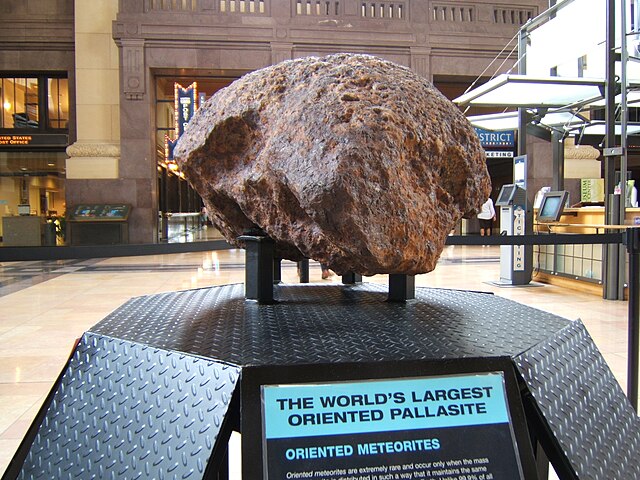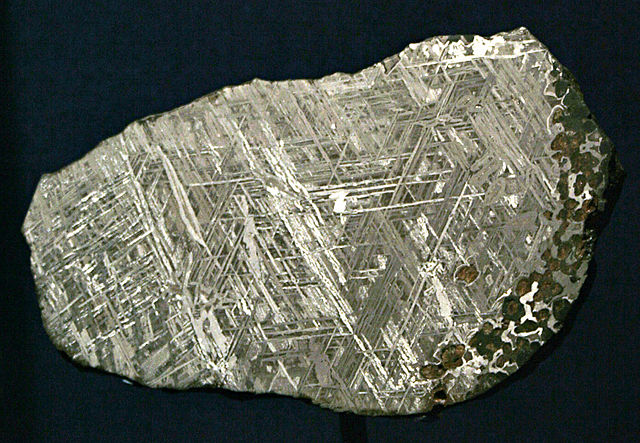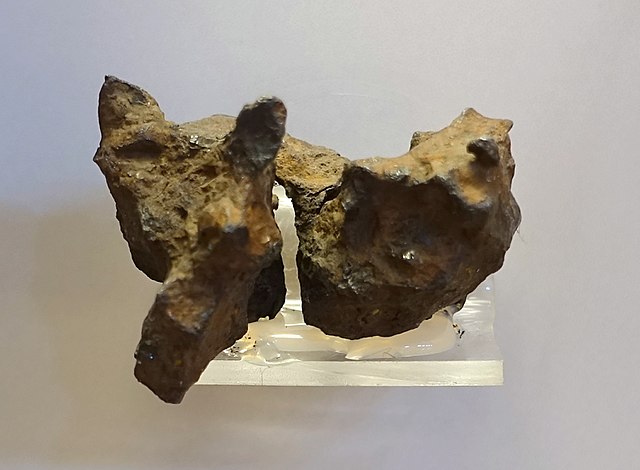Brenham



Brenham
The Brenham meteorite is a renowned meteorite from Kansas, USA, known for its high iron-nickel content and its classification as an octahedrite. This meteorite has fascinated scientists and collectors alike, offering valuable insights into asteroidal processes and the history of our solar system.
Discovery and History
The Brenham meteorite was discovered in 1882 near Haviland, Kansas, following reports of a bright fireball and subsequent meteorite fall. Fragments of the meteorite were found scattered across an area in Kiowa County, Kansas, and have since been studied extensively by scientists.
Recovery and Classification
The recovery of Brenham meteorite fragments involved systematic searches and excavations in the Kansas prairie. These efforts yielded numerous specimens that were subsequently classified as iron meteorites, specifically belonging to the octahedrite group.
Octahedrite Classification
Brenham is classified as a coarse octahedrite, characterized by its prominent Widmanstätten patterns. These patterns, visible when the meteorite is etched with acid, reveal a geometric arrangement of kamacite and taenite crystals, formed during slow cooling over millions of years within its parent asteroid.
Composition and Structure
The Brenham meteorite’s composition and structure provide valuable insights into its origin and the processes it underwent before reaching Earth’s surface.
Iron-Nickel Alloy
Brenham meteorites are composed primarily of an iron-nickel alloy, with iron comprising about 90% of its composition and nickel making up approximately 8%. This composition is typical of iron meteorites, suggesting that Brenham originated from the metallic core of a differentiated asteroid or protoplanet.
Widmanstätten Patterns
One of the most distinctive features of Brenham meteorites is the presence of Widmanstätten patterns. These intricate patterns are formed by the intergrowth of kamacite and taenite crystals and provide insights into the cooling history of the meteorite within its parent body. The clarity and complexity of these patterns in Brenham meteorites make them highly prized among collectors and researchers.
Geological and Astronomical Significance
The Brenham meteorite is of significant scientific importance, offering insights into asteroidal processes, impact histories, and the evolution of our solar system.
Asteroidal Origin
Brenham is believed to have originated from the asteroid belt between Mars and Jupiter. Its classification as an octahedrite suggests that it experienced extensive heating and differentiation processes within its parent asteroid before being fragmented and ejected into space.
Impact History
Studying Brenham and similar meteorites provides insights into impact histories and collision events that shaped asteroidal bodies. The presence of regmaglypts (thumbprint-like indentations) and fusion crust on Brenham fragments indicates exposure to atmospheric entry and potential fragmentation events during its journey to Earth.






